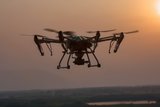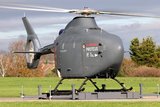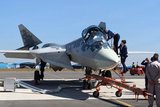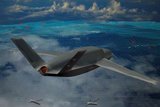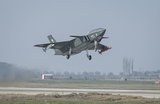Australia bets big on new systems and local industry in the face of drone wars
DroneShield is one of the companies bidding to meet Australia’s CUAS requirement. (Photo: DroneShield)
Learning from the war in Ukraine, the Australian Defence Force (ADF) has tightened its focus on Uncrewed Aerial Systems (UAS) with four separate approaches to market in just over 12 months. It is all part of an effort to create a sovereign UAS and Counter-UAS (CUAS) industry and to re-fashion the Australian Army.
The country’s Advanced Strategic Capabilities Accelerator (ASCA) has three of them under its remit, with the Capability Acquisition and Sustainment Group (CASG) running the fourth, Project Land 156. This project seeks a Systems Integration Partner (SIP) to manage a Counter Small UAS (C-sUAS) system, including a Command and Control (C2) system and the ability to integrate new sensors and effectors.
After nearly two year’s existence ASCA has transitioned and it is no longer a sibling of Defence’s Science and Technology Group (DSTG). Instead is now part of the Vice Chief of Defence Force’s (VCDF) group and closely aligned with the ADF’s three two-star Chiefs of Force Design, Force Integration and Strategic Plans. And it has a new head – Maj Gen Hugh Meggitt took over in February from Professor Emily Hilder who launched ASCA and saw it through its first 18 months.
Related Articles
Australia to adopt new predatory OWL species
Australia launches hunt for counter-drone systems
ASCA mounted a Sovereign UAS Challenge of 10 Australian Uncrewed Aerial Vehicle (UAV) manufacturers in April 2024 and has awarded AMSL Aero, Boresight Targets and Grabba Technologies contracts worth A$6.6 million (US$4.3 million) in total. The companies will produce 100 UASs each, some of them replacing Chinese-made DJI drones which are in widespread government service.
The companies used the contracts to develop their prototypes to a commercial standard by the end of 2024 and production drones will be acquired through a CASG standing offer panel by mid-year.
That fly-off was run jointly by the Australian Army’s Robotic and Autonomous Systems Implementation and Coordination Office (RICO). This resulted in contracts worth A$100 million for SYPAQ and Quantum Systems to develop 110 Intelligence, Surveillance and Reconnaissance (ISR) UASs each. SYPAQ’s CorvoX and Quantum Systems Vector 2-in-1 UASs will also be delivered this calendar year.
Last month ASCA issued a Request for Tender (RfT) for Mission Talon Strike, which closed on 30 May and seeks a Medium Range Precision Loitering Munition (M-R PLM) with a range of at least 100km, a payload of 6kg, a runway-independent launcher and a price point around A$100,000. Evaluation of the RfT responses is scheduled for 9 June with deliveries to begin less than a fortnight later on 20 June.
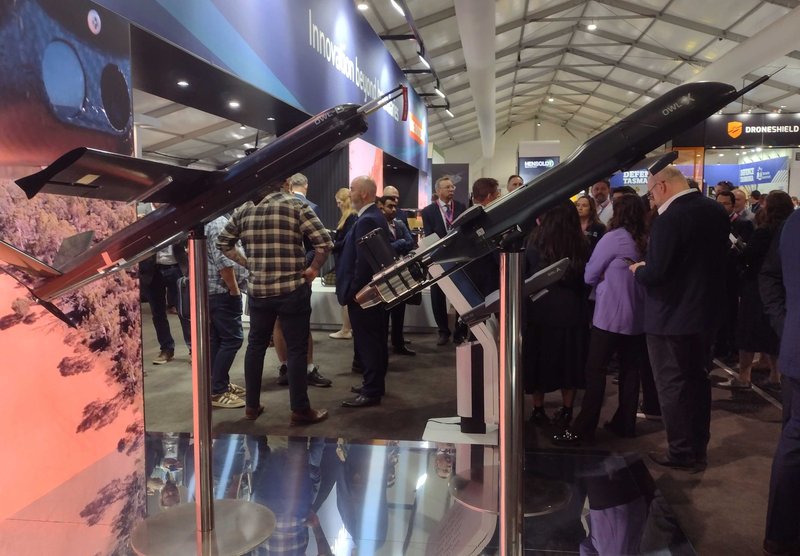
As previously reported by Shephard, Innovaero’s OWL (One Way Loitering) First Person View UAS is an obvious contender. The company, now part-owned by BAE Systems Australia, has integrated OWL-B with the pneumatic launcher and common ground control station of the Insitu RQ-21 Integrator UAS which is already in Australian Army service. However, Innovaero has also integrated the OWL-B with Corvus Technology’s newly developed electronic rail launcher which was featured by Corvus and Innovaero at the Australian International Air Show 2025.
ASCA also issued an RFT for Mission Syracuse which closed on 5 June and seeks a suite of CUAS effectors, ranging from direct-fire machine guns and cannon to High Energy Lasers (HEL) and Electronic Warfare (EW). It aims to deliver CUAS protection for frontline troops, vehicles and boats against swarms of Group 1 and 2 UASs and single Group 3 UASs. The outcomes of this RfT will be released on 7 July and deliveries of effectors will begin on 30 September.
Sovereign Australian contenders who have maturing equipment are not plentiful. They include Sydney-based DroneShield, which has made its global reputation by jamming UASs which depend on radio, WiFi and mobile phone links for control and navigation. The company now has a presence in more than 70 countries and currently has 1,000 units deployed in Ukraine.
“We are experts at RF [radio frequency] detection and disruption of small UAS including swarms,” says Terry Van Haren the company’s vice president Strategy. “RF control by WiFi signals is still the most prevalent way of controlling small UAS. For swarms of drones, it is essential for the drones to communicate with each other to maintain organised control, making RF disruption still a highly valid way of disrupting a swarm of drones.”
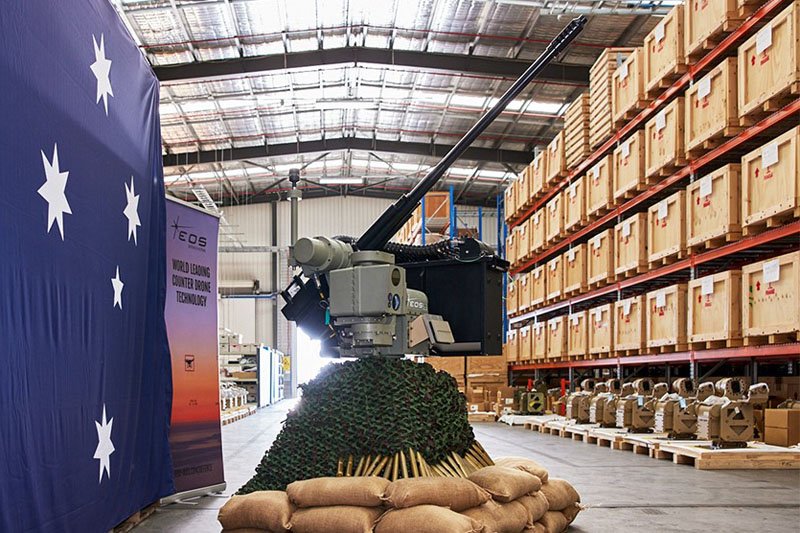
Canberra-based EOS whose Slinger C-sUAS system can use machine guns, 30mm cannon and its own HEL is another contender. So are Melbourne-based AIM Defence, which has been developing a very accurate HEL and sensor system; and Innovaero, whose small OWL-X is a UAS and even helicopter interceptor.
Defence aims to integrate the effectors with appropriate C2 system by the end of next year; and then by the end of 2027 mature the best for procurement that financial year.
Mission Syracuse runs alongside the RfT for Defence’s existing Project Land 156 which went out to an undisclosed list of international contractors earlier this year. The ADF is looking for a SIP who can deliver options for a C-sUAS C2 system which integrates all the selected sensors and effectors and rapidly distributes fire orders.
The SIP, to be selected by mid-year, will deliver a baseline C-sUAS capability by December and a complete Minimum Viable Capability (MVC) by December 2030. DroneShield has its hand up for this as well, said Van Haren, based on its mature and proven C2 mission system.
“We are offering [the ADF] that proven system maturity and the capacity to undertake further system integrations,” Van Haren remarked.
The ADF is serious about fielding UAS at scale, though likely won’t over-invest: it wants the ability to produce the latest UAS rapidly, rather than having lots of ageing or obsolete UAS on the shelf.
ASCA’s missions are designed with a clear path to service – if they work, said Meggitt. They can be “a good indicator of the depth of Australia’s innovation capacity and the potential to expand the defence industrial base,” he added.
“ASCA…now sits within Defence’s strategic centre – to remain aligned with and be responsive to Defence priority capability needs,” Meggitt remarked.
Related Programmes in Defence Insight
Sovereign UAS Challenge [Australia]
Related Equipment in Defence Insight
More from Air Warfare
-
![Brazilian Air Force conducts first live fire of Meteor missile from Gripen E]()
Brazilian Air Force conducts first live fire of Meteor missile from Gripen E
The major milestone for the beyond-visual-range air-to-air missile was conducted in November and expands the capabilities of the air force’s growing Gripen E fleet.
-
![India finally powers up engine production as it prepares to talk platforms with Putin]()
India finally powers up engine production as it prepares to talk platforms with Putin
Engine technology has been thrust into the spotlight ahead of Russian President Vladimir Putin’s visit to India this week, with the Su-57, S-400 and Kamov-226 expected to be high on the agenda.
-
![November Drone Digest: GA-ASI eyes Middle East for Gambit, Edge Group unveils new UAVs]()
November Drone Digest: GA-ASI eyes Middle East for Gambit, Edge Group unveils new UAVs
In November 2025, GA-ASI unveiled a new Gambit variant, the Gambit 6, and appears to be pitching the aircraft series to various customers in the Middle East, which is a fast-emerging CCA market. The Dubai Airshow also saw the unveiling of various Emirati aircraft from Edge Group.
-
![Baykar’s Kizilelma drone makes progress with first air-to-air kill]()
Baykar’s Kizilelma drone makes progress with first air-to-air kill
This test is the latest milestone achieved by the indigenous drone, destroying a target using a beyond-visual-range missile.







